Cheng'du
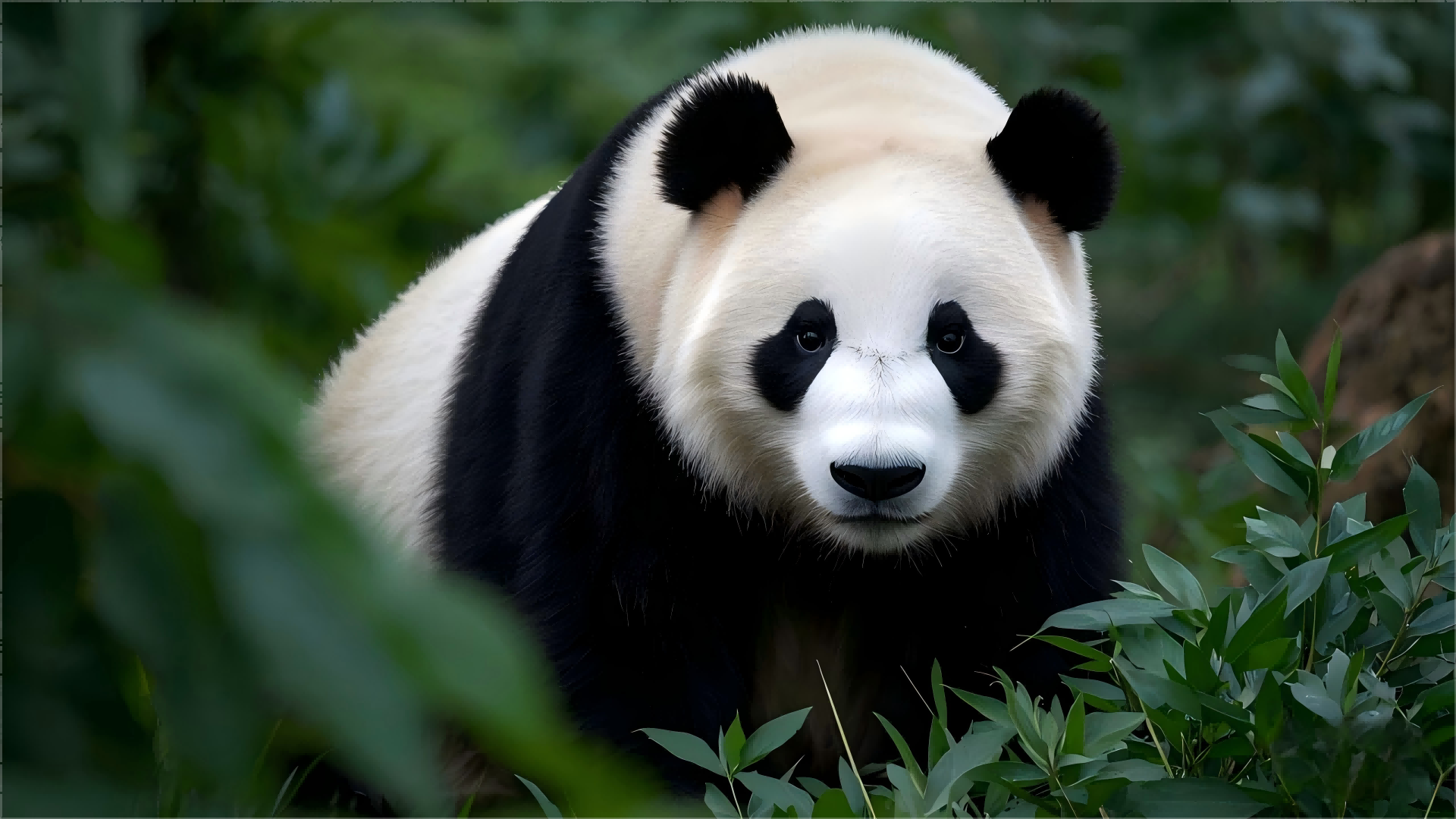
Chengdu is a charming city with distinctive travel characteristics. It is home to the lovely Giant Panda Breeding and Research Base, as well as historical monuments such as the Wuhou Temple and Dufu Cao Tang, and natural and humanistic landscapes such as Mount Qingcheng and Dujiangyan. Cuisine is rich and varied, with mouth-watering hot pots, skewers and Sichuan cuisine. Shopping is available at Taikoo Li, Chunxi Road and other trendy places. In addition, there are wonderful Sichuan opera face-changing performances and leisurely teahouse culture. Whether you like natural beauty, history and culture, or food and shopping, leisure and entertainment, Chengdu can satisfy you and bring you an unforgettable travel experience.
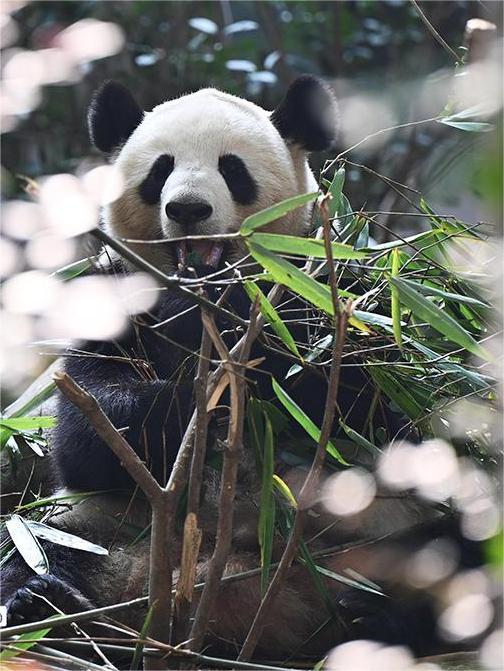

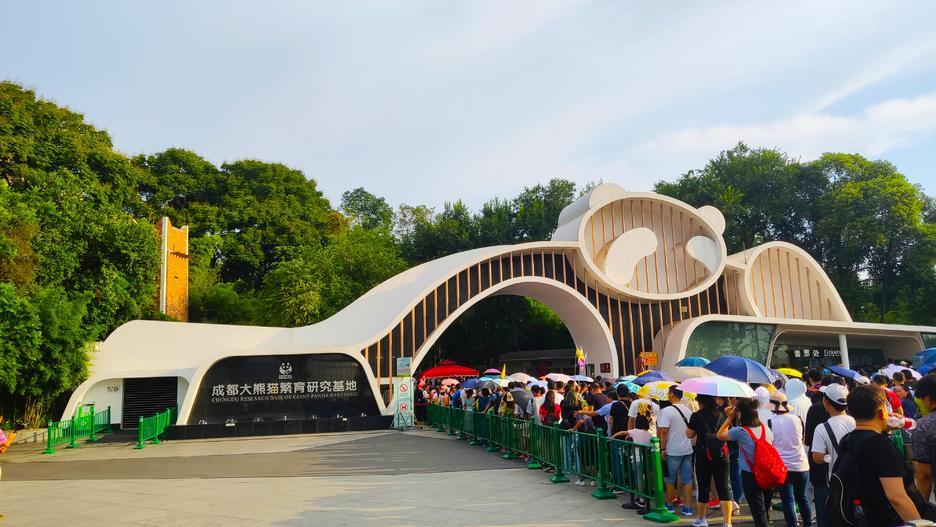
Top1.Chengdu Research Base of Giant Panda Breeding
There are many cute giant pandas in the base. You can watch these adorable national treasures up close. The base is located in the northern suburbs of Chengdu, about 10 kilometers away from the urban area. The construction of the base fully mimics the wild living environment of giant pandas, with lakes, streams, bamboo forests, lawns, etc. There are many "panda villas" in the base, which are enclosed leisure places for pandas. There are open-air gardens and indoor rest rooms. When the weather is cool, giant pandas will play in the gardens, and visitors can watch the cute giant pandas through the railing; when the weather is hot, the giant pandas will hide in the air-conditioned rest rooms, and at this time, visitors can only watch them through the glass. Can you also see pandas in the new area of the Panda Base? Are there other things to do? You can also see pandas in the new area of the Panda Base, and they are our meritorious pandas. The pandas have bigger homes and more space to move around. Watching pandas is the main activity, and there are also many other things to do and see. You must visit our landmark building - the internet-famous Panda Tower. As a new landmark building in Chengdu, it is located at the highest point of the base. The tower is 69.8 meters high and has 11 floors. Its exterior looks like a big bamboo shoot, and its interior is shaped like a blooming hibiscus flower. There are 81 platforms inside for visitors to view the base scenery from multiple angles. There is also the art museum (new building) in the dense forest area of the new area, which uses new exhibition methods such as multi-sensory interaction, lighting installations, interactive devices, and thermal induction to create an immersive exhibition scenario for visitors. The new area of the Panda Base plans to set up a rich variety of popular science display boards and interactive facilities in four major areas. While watching the giant pandas, visitors can learn about giant panda knowledge and enhance their interactive experience. On festivals related to animal and environmental protection, themed popular science activities such as interactive lectures, parent-child science popularization, and exploration games will be held for visitors of different age groups. After getting tired from playing, you can go to watch the musical - "Pandas", which vividly presents the scene of the magical animals represented by giant pandas living in harmony, sharing nature, and loving life on this beautiful and fertile land in Chengdu, Sichuan. Through the form of the musical, it reflects the livable scenery of Chengdu, Sichuan, and the simple and comfortable life of the local people. In terms of the total area, it has increased from the original 1,035 mu to 3,570 mu, an expansion of 2.5 times. During the expansion, the original topography and landform were fully followed and utilized. A multi-level landscape belt of mountain valleys formed by mountain gullies and streams was used to build 11 giant panda venues, multiple popular science venues, and a tourist pedestrian street and other visiting places. After the completion of the expansion project, it can accommodate no less than 180 giant pandas and associated animals such as red pandas and golden monkeys. As of now, 67 giant pandas and 43 red pandas have moved into the "new homes" in the expansion area, and there will be rare animals such as golden monkeys waiting for everyone in the future. Are the supporting facilities in the new area perfect? In the design of the new area, sufficient tourist service facilities are provided according to the standards of a 5A scenic area. Not only basic facilities such as sightseeing buses and tourist toilets are provided, but also a large number of tourist service facilities are equipped in the hill commercial street, the exit commercial street, and scattered commercial buildings in each area. The planned business forms include catering, souvenir sales, postal services, cinemas, theaters, extended education, etc., which can meet the needs of tourists in terms of quantity. After nearly a year of operation, in response to the actual problems of the large area of the new area and the uneven distribution of supporting facilities, the base has added many beverage vending machines, direct drinking water machines, shared convenience service facilities, etc. in the new area to improve the tourist experience. Next, the base will further supplement and improve the tourist rest facilities, consultation service facilities, tour guide facilities, etc. to meet the needs of tourists. The expanded Chengdu Panda Base will help Chengdu build a demonstration area for the harmonious coexistence of humans and nature, improve the scientific research and protection conditions for giant pandas, protect biodiversity, fully highlight the brand value, cultural value, and economic value of giant pandas, and shape the cultural and tourism brand of "Three Treasures of Sichuan - Comfortable Journey in Sichuan". In 2022, new business forms and projects such as the Panda Art Museum, IMAX Cinema, and Panda Theatre will be gradually opened in the expansion area, meeting the tourists' needs for food, drink, entertainment, shopping, and touring while watching the giant pandas. Firstly, it is more conducive to the scientific research and protection of pandas. As a national protected animal, the giant panda is gentle in nature, has an adorable appearance, and its movements are amusing, so it is deeply loved by the people. However, with the continuous increase in the number of giant pandas, problems such as high population density and the inability to fully improve animal welfare in the panda breeding and management work in the old area of the base have become increasingly obvious. The completion and operation of the new area of the Panda Base can effectively solve the above problems, comprehensively improve the scientific research and protection level of giant pandas in the Panda Base, and effectively safeguard the welfare of the animals in the park. Secondly, it is more conducive to enhancing the people's sense of well-being and gain. As socialism with Chinese characteristics has entered a new era, the principal contradiction in society has been transformed into the contradiction between the people's ever-growing need for a better life and unbalanced and inadequate development. Currently, tourism has become a rigid demand for the people's better life in a well-off society and is widely favored by the people. The construction of the new area of the base conforms to the new trend of the transformation and upgrading of people's tourism consumption, effectively meets the people's high-quality and diversified needs for tourism consumption, and enhances the people's sense of well-being and gain. Thirdly, it is more conducive to creating a giant panda characteristic IP and helping the construction of the park city demonstration area. Since the establishment of the old area of the base in 1987, it has achieved internationally recognized results in giant panda scientific research and protection, popular science education, cultural tourism, and international exchanges. It is recognized both at home and abroad as a demonstration unit for the ex-situ conservation of giant pandas with strong scientific and technological strength, many scientific and technological achievements, and good application and promotion effects in captive giant panda protection. It has been successively rated as an "Advanced Collective in National Popular Science Work", a "National Youth Science and Technology Education Base", a "National Popular Science Education Base", a "National Environmental Protection Popular Science Base", a "Cross-Straits Exchange and Cooperation Base", has undertaken the "Key Project of Cultural Exchanges of the Publicity Department of the CPC Central Committee" twice, and has won the United Nations "Global 500" award twice. The construction of the new area of the base will effectively enhance the image of China's tourism brand, build a giant panda characteristic IP with international recognition, and help Chengdu accelerate the construction of a world-famous cultural city and a park city demonstration area that practices the new development concept.
- Natural Landscape
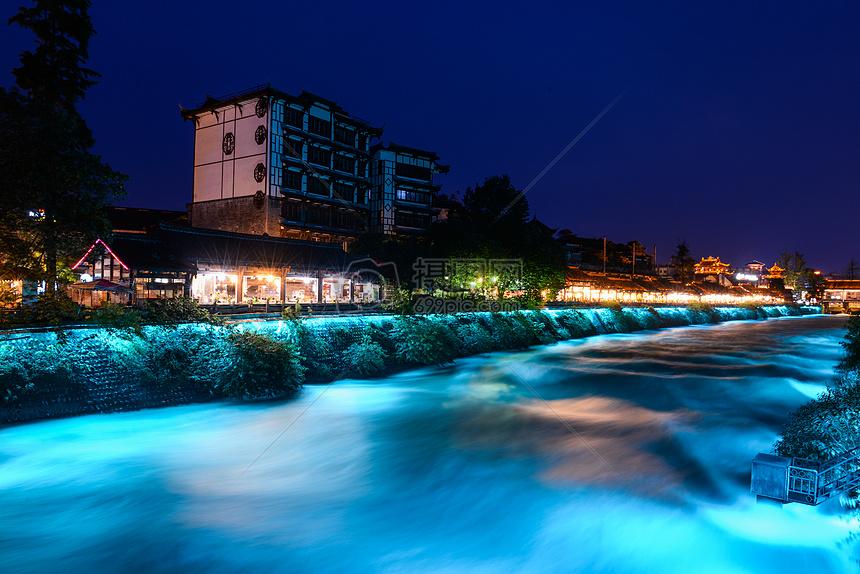
Top2.Dujiangyan Scenic Area
Dujiangyan Scenic Area is located on the main stream of the Minjiang River west of Dujiangyan City. It was built around 256 BC by Li Bing, the governor of the Shu Prefecture in the Qin Dynasty, and his son. It is currently a well - preserved ancient water conservancy project in China. The project consists of three main projects, namely the Yuzui Dividing Dike, the Feishayan Spillway, and the Baopingkou Water Inlet, as well as auxiliary projects such as the Baizhang Dyke and the Renzi Dyke. It separates the surging Minjiang River into the outer river and the inner river. The outer river is for flood discharge, while the inner river is for water diversion and irrigation, turning the Western Sichuan Plain into the "Land of Abundance". With its magnificent clear water, precipitous cliffs, strange peaks, towering ancient trees and profound cultural heritage, Dujiangyan rightfully becomes a world - famous scenic spot. There are many famous scenic spots, including the South Bridge, Lidui Ancient Garden, Wodie (iron bars buried underground as a reference for water volume control), Yan Gong Dao (the path dedicated to those who have made contributions to the Dujiangyan Irrigation System), Zhang Song's Ginkgo Tree, Qingxi Garden, Fulong Temple, the three main projects at the head of the Dujiangyan Irrigation System, the Yuzui Dividing Dike, the Feishayan Spillway, the Baopingkou Water Inlet, Anlan Bridge, Erwang Temple, Qinyan Tower, Songmao Ancient Road, the Memorial Archway Commemorating the Good Governance of Water Conservancy by Xiu Zhi - jing, Yuwang Palace, Yulei Pass, Fengqiwo, Doudi Platform, Xuanwei Gate, and the City God Temple.
- Historical culture
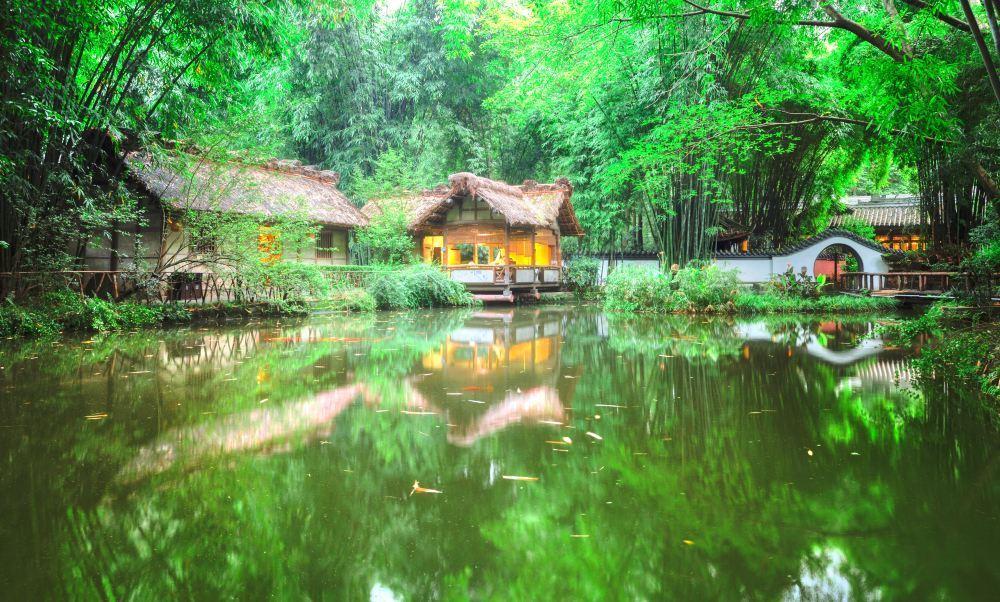
Top3.Du Fu Thatched Cottage
It is the former residence of Du Fu, a famous poet of the Tang Dynasty, when he lived in Chengdu. Du Fu lived here for nearly four years and created over a hundred poems. Therefore, this place is regarded as a “sacred land” in the history of Chinese literature. The current Du Fu Thatched Cottage was repaired many times during the Song, Yuan, Ming and Qing dynasties. The cottage is located on the bank of the Huanhua River outside the west gate of Chengdu. There are numerous pavilions and ancient trees in the garden. After entering from the main entrance, the three main buildings, namely the Grand Corridor, the Hall of Poetry History, and the Memorial Temple of Du Gongbu, are arranged in sequence from south to north on the central axis. In the northeast of the Memorial Temple of Du Gongbu are the Shaoling Stele Pavilion and the former thatched cottage of the great poet. To the east of the thatched cottage is the Bonsai Garden. Going south, there are the Memorial Temple of Lady Huanhua, the Flower Path, the Hall of Great Elegance, and the Thatched Cottage Exhibition Hall near the south gate. The Hall of Great Elegance was originally the Daxiong Hall of the Thatched Cottage Temple and got its name from “The Record of the Hall of Great Elegance” written by Huang Tingjian, a litterateur of the Northern Song Dynasty. It was officially opened in 2002. The three characters “Hall of Great Elegance” on the plaque of the door are collected from the calligraphy of Yan Zhenqing, a famous calligrapher of the Tang Dynasty. Inside the Hall of Great Elegance, there is a large - scale colored - glazed inlaid lacquered mural, which is the largest in China so far, and 12 sculptures of famous poets from various dynasties, vividly displaying Du Fu's life and the development history of Chinese classical poetry. The iconic landscape - the former thatched cottage The former thatched cottage was rebuilt by referring to the characteristics of the folk houses in western Sichuan and has become the iconic landscape of Du Fu Thatched Cottage. In the Bonsai Garden on the east side of the thatched cottage, there is the “Wooden Inscription Corridor of Du Fu's Poems” built in 1999, displaying more than a hundred wooden inscriptions of Du Fu's poems, among which there are four masterpieces such as “the best of Du Fu's poems, the best of calligraphy, the best of nanmu wood, and the best of carving skills”. Since Du Fu once served as a staff officer of the military governor and was a staff member of the Ministry of Works, he was called Du Gongbu, and the memorial temple got its name accordingly. The memorial temple has three bays, with mountain - shaped gables and exposed columns, on a high platform with stone steps, and has latticed windows and lattice doors, looking solemn and stately. There are stone sculptures of Du Fu from the Ming and Qing dynasties in the temple. Among them, the half - body stone sculpture of Du Fu from the 30th year of the Wanli reign of the Ming Dynasty (1602) is the earliest stone sculpture remaining in the thatched cottage. In front of Du Fu's thatched cottage back then, there was a path lined with flowers and trees on both sides. He once wrote in his poem: “The flower - lined path has never been swept for guests; My thatched door now opens for you for the first time.” Today's Flower Path is a small path with red walls on both sides connecting the memorial complex of Du Fu Thatched Cottage and the original Thatched Cottage Temple. At the end of the Flower Path is the “Shadow Wall of the Thatched Cottage”. The two characters “Thatched Cottage” inlaid with blue - and - white broken porcelain by Zhou Shanpei, the director of the Department of Industry Promotion in Sichuan at the end of the Qing Dynasty, are here. It has been damaged and repaired several times. There are three gates in the thatched cottage. The main entrance and the south gate are both in the south of the thatched cottage, and the north gate is in the northwest. The main entrance and the south gate are not far apart, and most tourists enter and exit through these two gates.
- Historical culture
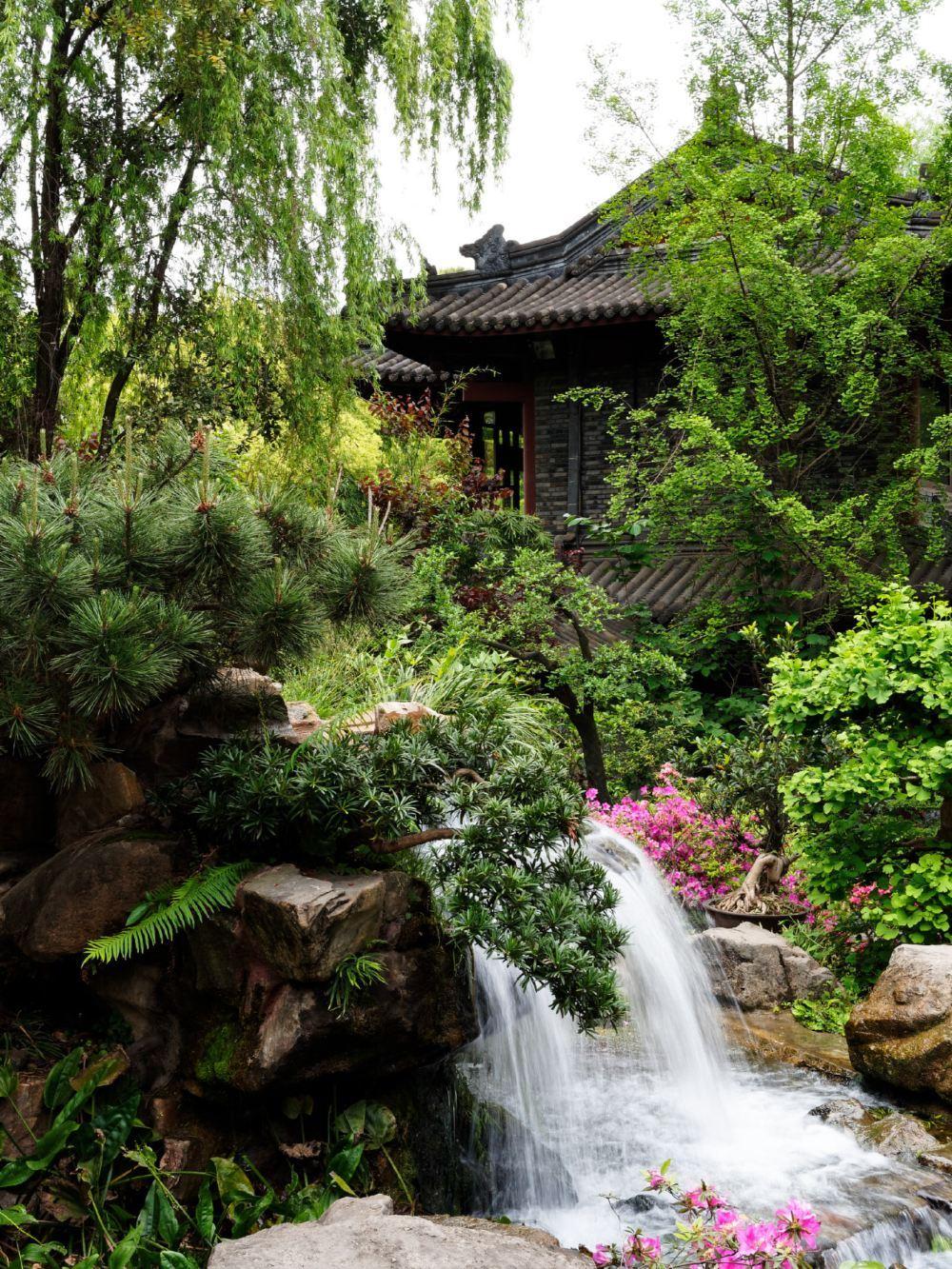
Top4.Wuhou Shrine
Chengdu Wuhou Shrine is the place where temples commemorate heroes of the Shu Han such as Liu Bei and Zhuge Liang. It originated in the first year of Zhangwu (221 AD) of Emperor Zhaolie of the Shu Han when Liu Bei's Huiling Tomb was built. The Han Zhaolie Temple was also constructed at the same time as Huiling Tomb. Around 500 AD during the Southern and Northern Dynasties period, Wuhou Shrine was relocated from "Shaocheng" in Chengdu to the side of Huiling Tomb and Han Zhaolie Temple. This layout lasted until the Ming Dynasty. In the 23rd year of Hongwu in the Ming Dynasty (1390 AD), Zhu Chun, the King Xian of Shu in the Ming Dynasty, paid a visit to Wuhou Shrine. On the grounds of "rulers and ministers should be integrated", he combined Huiling Tomb, Han Zhaolie Temple and Wuhou Shrine into one. Since Zhuge Liang had a greater influence in the minds of the common people than Liu Bei, it was customarily called "Wuhou Shrine" by the folk. The cultural relic area of Chengdu Wuhou Shrine is mainly composed of Huiling Tomb, Han Zhaolie Temple, Wuhou Shrine and Sanyi Temple. The main building is Wuhou Shrine. Wuhou Shrine is divided into the main gate, the second gate, Liu Bei's Hall, the passage hall, Zhuge Liang's Hall, Sanyi Temple, etc., which are arranged on a central axis from south to north. There are 50 statues of heroes of the Shu Han such as Liu Bei and Zhuge Liang enshrined in the shrine. There are also numerous steles, horizontal inscribed boards and so on about Zhuge Liang and the culture of the Three Kingdoms in this area. The famous "Red Wall and Bamboo Shadows" in Chengdu is located within the scenic area. Remember to take photos! The garden area of Wuhou Shrine is located on the west side of Wuhou Shrine. There are buildings such as the stone memorial archway gate, the three - arched gate, the square pavilion, the Jiansin Hall and the tomb chamber in this area. It is the only cemetery complex in the northern style in the southwest region. Wuhou Shrine is adjacent to Jinli (Jinli Folk Custom Area), and you can visit them together.
- Historical culture
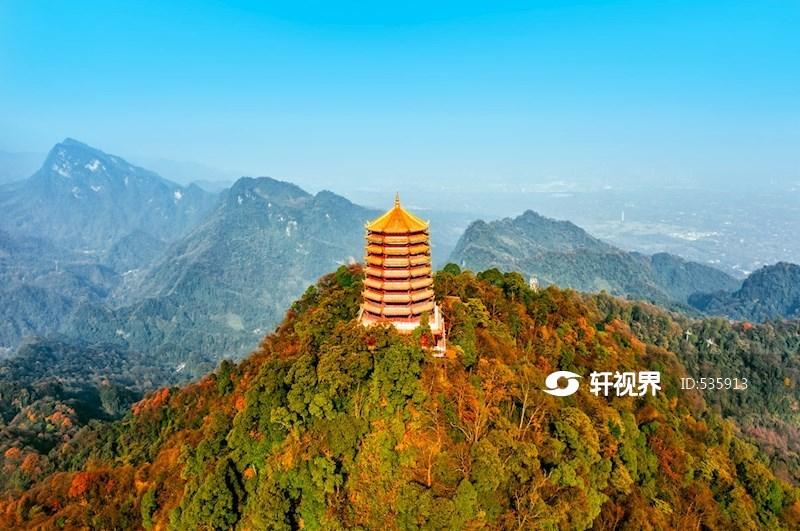
Top5.Mount Qingcheng
Mount Qingcheng has long enjoyed the reputation of "Qingcheng Mountain boasts the most secluded scenery under heaven". It is divided into the front mountain and the back mountain. The front mountain is the main part of Mount Qingcheng, where Taoist culture and cultural relics are mostly concentrated. This is also what ordinary tourists refer to as "Mount Qingcheng". The back mountain is known for its natural scenery and is a great place for a vacation. The front mountain of Mount Qingcheng has the Changguan and the Shangqing Palace as its core, with Taoist temples facing each other. Cultural landscapes such as the Zushi Hall and the Chaoyang Cave complement natural scenery like the Jinbian Rock, the Shisun Peak, and Mount Zhangren. The main scenic spots in this area include the Laojun Pavilion, Yuecheng Lake, the Tianshi Cave, the Guanyin Pavilion, the Shangqing Palace, the Natural Painting, and the Zushi Hall. The back mountain of Mount Qingcheng is adjacent to the Wolong Nature Reserve, where ponds, waterfalls, and lush green grass can be seen everywhere. The main scenic spots here are the Jinbi Tiancang, Tai'an Ancient Town, the Crystal Cave, the Santan Wuquan, the Longyin Gorge Plank Road, the Shuangquan Waterfall, the Baizhang Bridge, the Baiyun Caves, and the Tianqiao Wonder. Generally, half a day is enough to visit Mount Qingcheng, and there is no need to stay overnight. There are shops selling food everywhere on the mountain. If you have enough time, you can stay here for one night to watch the sunrise early the next morning. Both the Tianshi Cave and the Shangqing Palace on the mountain have Taoist temples that provide accommodation and meals.
- Natural Landscape
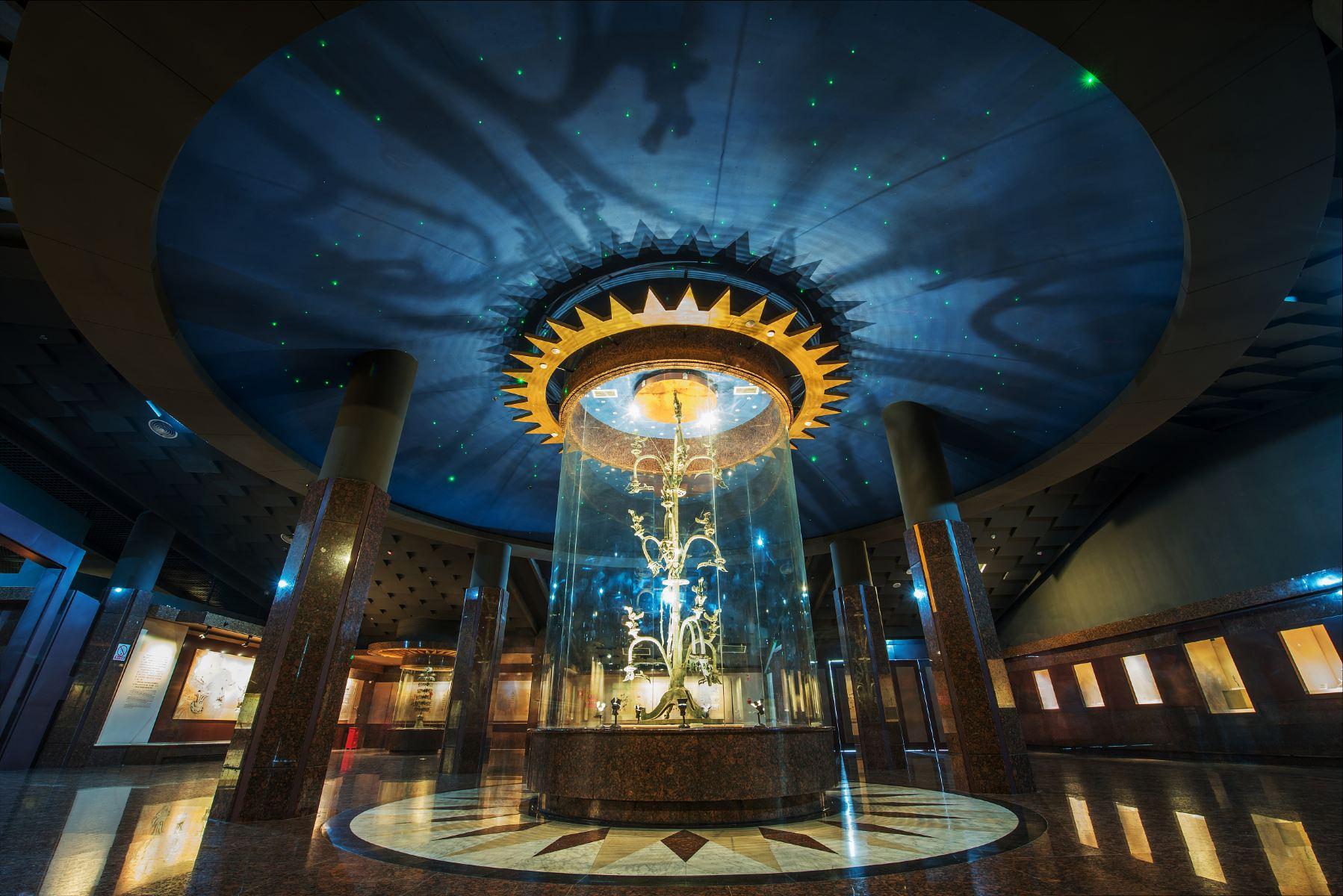
Top6.Jinsha Site Museum
Jinsha Site Museum is located in the northwest of Chengdu urban area. It is an archaeological museum established on the original site of Jinsha Site, an important archaeological discovery of the ancient Shu civilization, dedicated to the protection, research, and display of the Jinsha Site and the ancient Shu civilization. In April 2007, the museum officially opened to the public. It covers an area of 300,000 square meters and has a total building area of about 40,000 square meters, consisting of the Relics Hall, Exhibition Hall, Cultural Relics Conservation and Restoration Center, Cultural Exchange Center, and Garden Area. The museum's collection is rich and complete in categories, and all the cultural relics have high historical, scientific, cultural, and artistic values. The exhibitions comprehensively showcase the glory of the ancient Jinsha Kingdom in the Shu region from multiple perspectives, including the archaeological site, ecological environment, production and daily life, religious rituals, and cultural background. The Jinsha Site was named one of the "Top 10 New Archaeological Discoveries in China in 2001", a Major National Historical and Cultural Site under State Protection, and one of the first batch of National Archaeological Site Parks in China. It has been included in the Preliminary List of China's World Cultural Heritage together with the Sanxingdui Site. The pattern of the "Golden Bird Symbolizing the Sun" unearthed from the Jinsha Site has been designated as the symbol of China's cultural heritage and the core pattern of Chengdu's city image logo. Jinsha Site Museum is currently a national AAAA - level tourist attraction, a first - class national museum, an educational base for research and practice for primary and secondary school students across the country, and an innovation and practice base for post - doctors in Sichuan Province.
- Historical culture
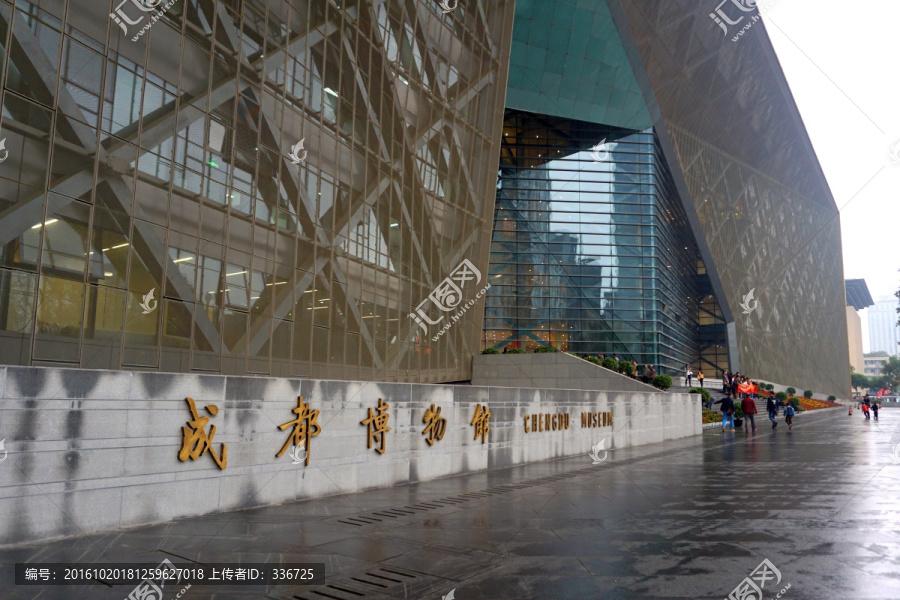
Top7.Chengdu Museum
The Chengdu Museum (Chengdu Chinese Shadow Puppetry Museum) is a public welfare institution of the first category under the Chengdu Municipal Bureau of Culture, Radio, Television and Tourism. It was founded on September 15, 1958, and has gone through several development stages, including the Preparatory Committee of the Chengdu Local Chronicles Museum, the Chengdu Cultural Relics Administration Office, the Chengdu Museum, and the Chengdu Museum and Cultural Heritage Research Institute. At the end of 2015, the new Chengdu Museum was established with the approval of the Organization Establishment Office of the Chengdu Municipal Party Committee and officially opened to the public on September 15, 2016. Located on the west side of Tianfu Square in the city center, the main building of the Chengdu Museum is divided into a South Building and a North Building. The above - ground part of the South Building mainly serves as office and research areas, and the underground part is an academic lecture hall (multi - function hall). The North Building is mainly an exhibition area. The first floor houses the lobby, screening room, and special exhibition hall. The underground first floor features an exhibition on the relationship between humans and nature. Floors two to three above ground display the ancient part of the "The Glorious Chengdu: Exhibition of Chengdu's Historical and Cultural Heritage" exhibition. The fourth floor showcases the modern and folk culture parts. The fifth floor houses the exhibition of Chinese shadow puppetry and puppetry. The total exhibition area is nearly 20,000 square meters. The Chengdu Museum has a total collection of nearly 200,000 items, forming a relatively complete collection sequence from the Neolithic Age to the Republic of China period. The collection types cover bronzes, gold and silver wares, brick carvings, stone carvings, ceramics, calligraphy and paintings, furniture, shadow puppets, puppets, Taoist altar paintings, masks, wood carvings, etc., and have reached a certain scale and system in terms of quantity and quality. Since its opening, the Chengdu Museum has successively held a series of temporary and special exhibitions, such as "The Nostalgia in Turbulence - Zhang Daqian", "The Emperor of a Prosperous Era - Special Exhibition of Emperor Qianlong of the Qing Dynasty", "The Soul of the Silk Road - Grand Exhibition of Dunhuang Art and Special Exhibition of Cultural Relics along the Silk Road in the Land of Abundance", "The Imperial Summer Palace - Special Exhibition of Cultural Relics from the Peterhof State Museum of Russia", "Exhibition of French Modern and Contemporary Painting Art and Photography Exhibition of 'Portrait Transformation'", "Echoes of Civilization - Ancient Treasures from Afghanistan", "The Road between Qin and Shu - Special Exhibition of Bronze Civilization", which have been widely praised by the audience.
- Historical culture

Top8.Shu Feng Ya Yun Sichuan Opera Theatre
The Sichuan Opera performances at "Shu Feng Ya Yun" in Chengdu are a dazzling pearl in the treasure trove of Chinese opera. It is a folk art beloved by people in several southwestern provinces such as Sichuan, Yunnan, and Guizhou. In terms of opera vocal styles, Sichuan Opera consists of four major vocal styles - Gaoqiang, Kunqiang, Huqin, and Bangqiang - plus a local folk lantern opera in the province. Except for the lantern opera, these four types were all introduced into Sichuan by out - of - province opera troupes from the end of the Ming Dynasty to the middle of the Qing Dynasty. Sichuan Opera is a dazzling pearl in the treasure trove of Chinese opera. "Shu Feng Ya Yun" once gathered many famous Sichuan Opera actors. In recent years, it has reunited well - known local actors to jointly present the "Classic Opera and Folk Exquisite Performances" every night. Founded in 1998, based in the Land of Abundance and facing both domestic and international audiences, "Shu Feng Ya Yun" comprehensively showcases authentic Western Sichuan folk art and classic operas. It is a large - scale multi - functional pear garden that integrates Chinese traditional art performances, folk specialty stunt performances, and opera and drama supplies. The Sichuan - characteristic performances at "Shu Feng Ya Yun" incorporate the essence of Bashu folk art, covering the culture of the Three Kingdoms and Bashu folk stunts: Sichuan Opera, face - changing, fire - spitting, puppet shows, tea art, and rolling lamp shows, etc., which are unique in Shu culture. The charm of Shu has endured through the ages, and its elegant rhyme has been passed down for hundreds of years. "Shu Feng Ya Yun" is located within the ancient building complex of Qingyang Palace on Qintai Ancient Path in Chengdu, Sichuan, China. It is adjacent to the famous Qingyang Palace across the wall and corresponds distantly to Du Fu Thatched Cottage and Wuhou Shrine. The architecture of "Shu Feng Ya Yun" is simple and unsophisticated, with the honest and leisurely charm of ancient Western Sichuan. It used to be a pear garden that had experienced ups and downs for a hundred years. For a long time, it has been a club for Sichuan Opera actors where famous actors gathered, and it is currently a folk pear garden with a profound heritage in Sichuan. The gongs, drums, zithers, and flutes at "Shu Feng Ya Yun" show their charm without a single word. The singing, playing, and reciting bring together the essence of various tunes. Actors of all roles - sheng, dan, jing, mo, and chou - take the stage one by one, and Kunqiang, Gaoqiang, Huqin, Tanqiang, and other types of opera come in succession. Here, there are authentic Sichuan Opera stunts - face - changing, fire - spitting, and clothing - changing shows, as well as rolling lamp shows and hand - shadow plays that are well - known throughout China. Moreover, the stick puppetry is exquisitely crafted and skillfully performed. The music is so powerful that it stirs the soul, and the traditional sounds linger in the air. One night here offers an experience of a thousand years of Western Sichuan culture. "Shu Feng Ya Yun" welcomes you! "Shu Feng Ya Yun" used to be a club for Sichuan Opera actors where famous actors gathered. In recent years, it has reunited well - known local actors and launched the "Classic Opera and Folk Exquisite Performances" every night. Not only has it become well - known, but it has also been reported by domestic and international media. In a blink of an eye, it has revived the glory of the pear garden, and the traditional sounds linger on. The civilization of Western Sichuan has been passed down through the ages, enjoying unique advantages. Face - changing, fire - spitting, and rolling lamp shows are famous across China. The stick puppetry is exquisitely crafted and skillfully performed; the pure singing of young girls is so touching that it defies description. Listening to the ancient zither, one can't help but dream of the era of the Three Kingdoms. Hearing the erhu, one feels that the world has changed. The hand - shadow play that has been extinct for many years has returned to the folk. The music is powerful and full of joy. "Shu Feng Ya Yun" has lofty ambitions. It aims to revive Bashu folk art in the folk, let the drifting folk art culture regain its splendor in the teahouse, and let famous actors with unique skills return to the people. Today, "Shu Feng Ya Yun" has become a folk cultural club where famous actors gather and a place where opera fans and friends stay when they come to Chengdu.
- Historical culture
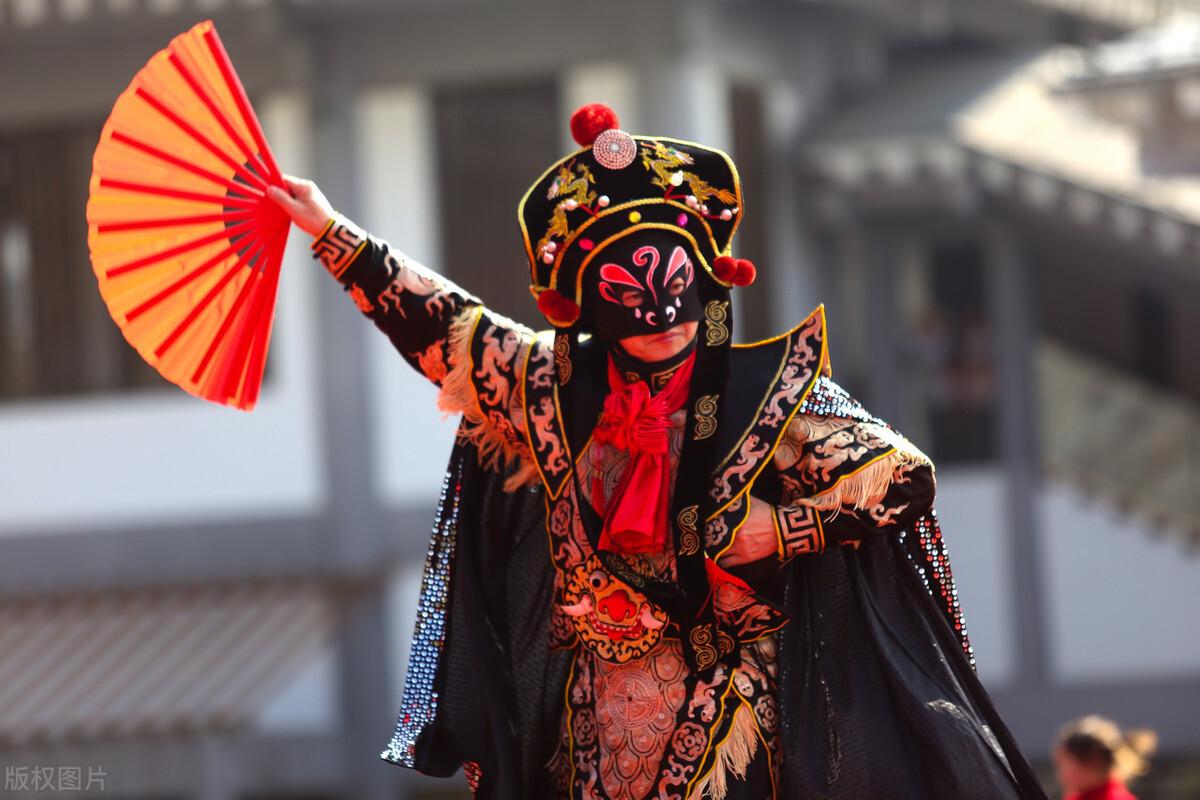
Top9.Liyuan Guild Hall - Intangible Cultural Heritage Sichuan Opera Face-changing Performance (Wenshu Monastery Store)
During the Qing Dynasty, a new term emerged in the history of Chinese opera: the Opera Club (Liyuan Huiguan). Opera has always had the alias "Liyuan", and opera actors are also called "Liyuan disciples". Initially, the Opera Club served as a trade - union organization and spiritual home for opera artists. As time passed, Chinese opera has become a gem of traditional Chinese art and one of the important forms of folk culture. There are numerous and interesting opera genres, and its performance style combines singing, dancing, speaking, and martial arts, integrating "singing, acting, reciting, and combat skills", making it unique in the world's theatrical history. The Opera Club was jointly founded by Ms. Hu Xuemei, a famous Sichuan opera actress, and Mr. Liao Xiaojian, a former Sichuan opera actor and a private entrepreneur. It is located in Wenshu Fang, the central leisure and tourism area of Chengdu. The origin of the club dates back to after the "Wenchuan Earthquake" in 2008. To entertain opera fans, the club spontaneously organized "People - Benefiting Performances", which became the spiritual pillar for countless opera lovers during that special period. It adheres to the principle of "Living for oneself and singing for the audience". Today, the Opera Club is not only a "Sichuan Opera Practice Base" for national intangible cultural heritage. It has also jointly established a public - welfare fund for the inheritance of intangible - cultural - heritage Sichuan opera with the Chengdu Charity Federation, contributing to the inheritance of Sichuan opera culture. It initiated the "Intangible - Cultural - Heritage Sichuan Opera Parent - Child Special Session", attracting many parent - child families to get to know Sichuan opera. The Opera Club mainly focuses on Sichuan opera, promoting the reputation of "Sichuan operas are the best in the world". Here, you can get behind - the - scenes access, have close contact with artists, and watch a wide range of Sichuan opera performances, such as face - changing, fire - spitting, rolling - lamp shows, kung - fu tea art, puppet shows, shadow plays, etc., and feel the charm of traditional culture. The Opera Club makes friends through opera. It brings together famous opera artists and actors from across the country. While offering authentic Sichuan opera culture to tourists visiting Sichuan, it creates special sessions of classic operas from different regions and gathers folk stunt performances. The Opera Club has lofty aspirations. You can watch operas, taste tea, and enjoy local special snacks here. If you are an opera fan, you can act as a famous opera character and experience the saying "One minute on the stage requires ten years of hard work off the stage". If you come here out of interest, you are welcome to join the "Liyuan disciples", and we will jointly inherit and develop Chinese opera culture.
- Historical culture
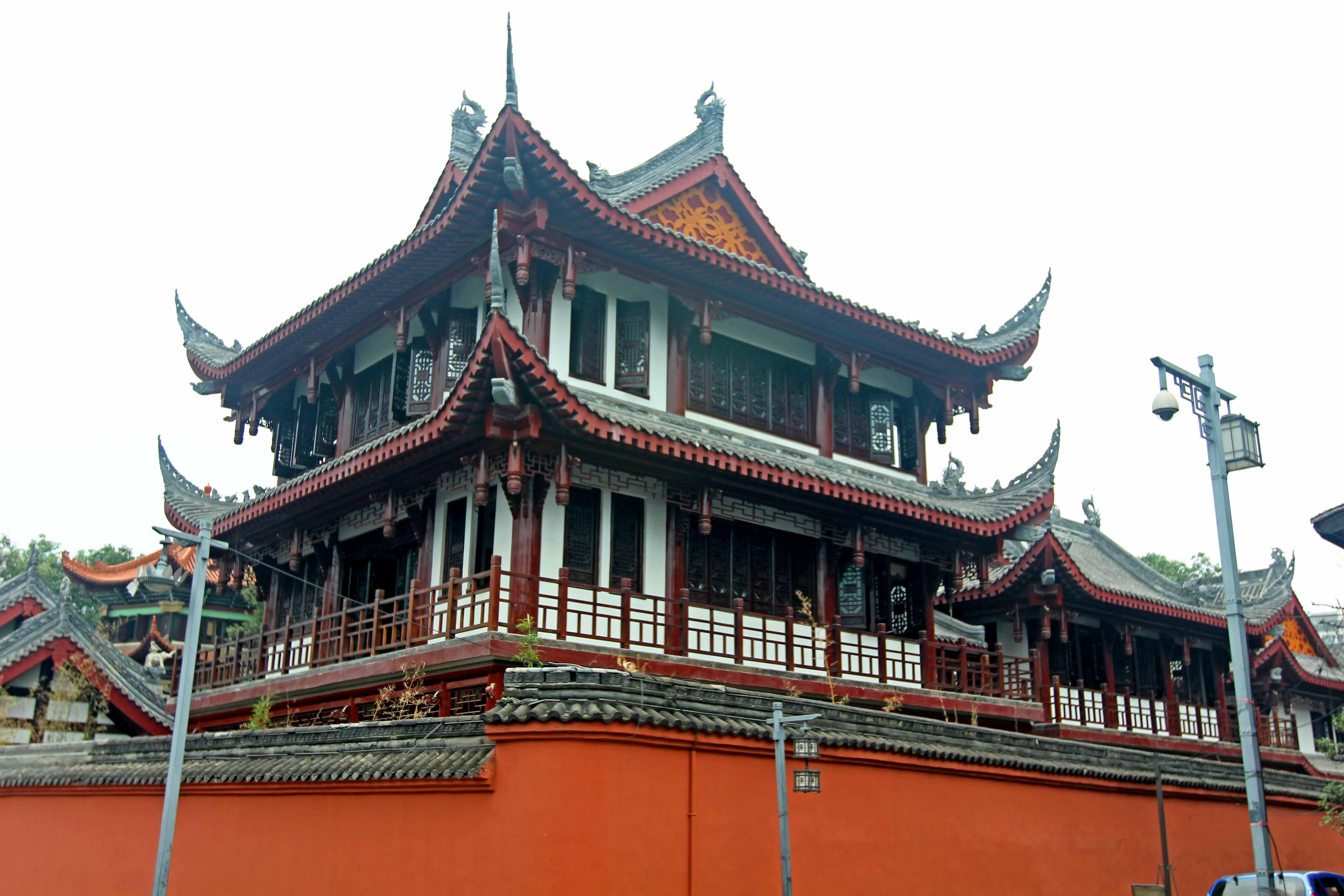
Top10.Wenshu Fang
Wenshu Fang is located beside Renmin Middle Road in the center of Chengdu. It integrates functions such as tourism, leisure vacation, food and beverage, specialty shopping, appreciation and collection of antiques, calligraphy and paintings, health care, entertainment shows, conferences and research, business negotiations, exhibitions, as well as domestic and foreign business information and cultural and artistic exchanges. With a time - span that traverses ancient and modern times and a recreational concept of participation and experience, it interprets and spreads the humanistic features, folk customs and essence of leisure culture of old Chengdu. It is a business card that showcases the characteristics of Chengdu and represents Chengdu's culture. It is an excellent choice for Chengdu residents to reminisce about the past and seek ancient traditions and to relax and have fun, and an important window for tourists and guests at home and abroad to get to know Chengdu and experience its leisure culture. Wenshu Fang forms characteristic commercial courtyards with traditional Western Sichuan residential buildings, a special architectural cultural symbol in China. It is a common carrier of historical, cultural and commercial values. Relying on its profound natural scenery and cultural heritage, it completely subverts the traditional form of commercial streets and becomes a cutting - edge creative courtyard commercial street for experiencing the development of the business era.
- Historical culture

Top1.Holiday Inn Express & Suites Chengdu Pixian (Heping Street Subway Station)
请你提供具体的正文内容,以便我将其翻译成英语。
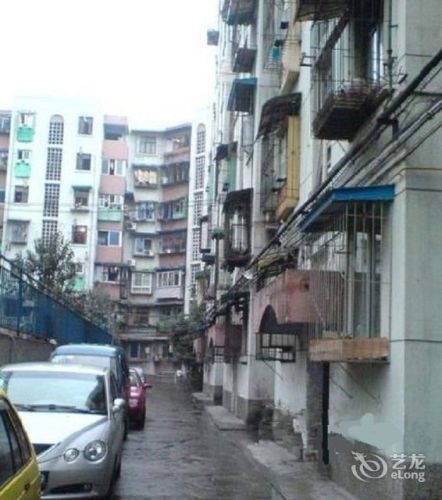
Top2.Zidu Hotel
No. 210, Shuangnan Street
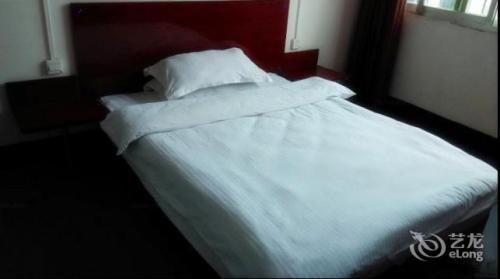
Top3.Jingxinju Business Hotel
No. 23, Changsheng Alley
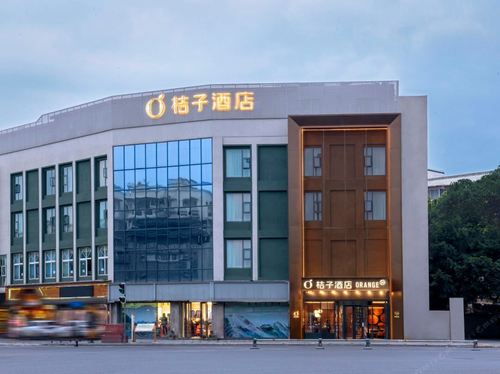
Top4.Orange Hotel (Chengdu Jinsha Site Museum Branch)
No. 59, Tongsheng Road (a 450-meter walk from Exit C of Jinsha Museum Metro Station)
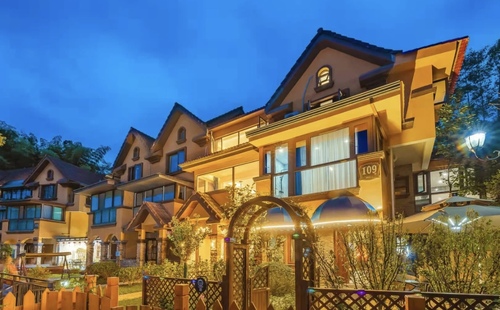
Top5.Huashuiwan Xiling Secret Realm Holiday Villa
No. 121 - 5, Wangshan Villa (Yuelu Bay), Huashuiwan
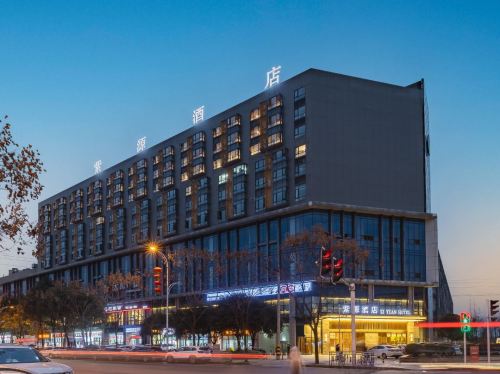
Top6.Chengdu Ziyuan Hotel
Dayu Square, No. 259-1, Wenming Street

Top7.Yunshang Huajian Private Hot Spring Smart B&B in Qingcheng Mountain
No. 16, Xiangnan Road, Grand View Garden, Qingchengshan Town
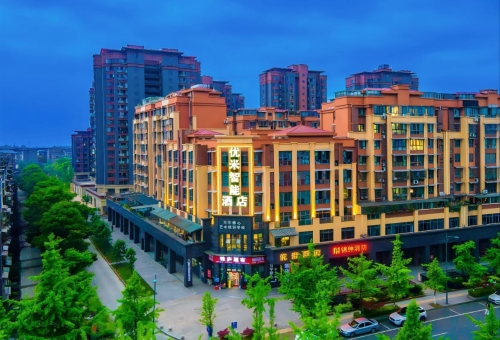
Top8.Youmi Smart Hotel
No. 78, Liaojiaqiao Road
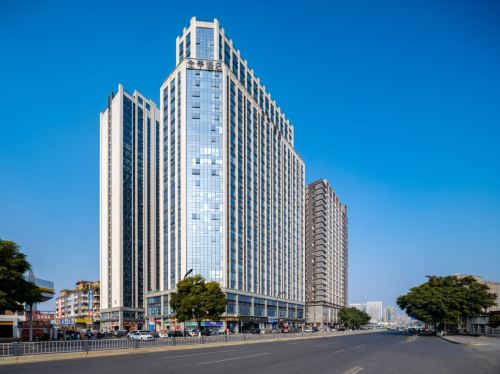
Top9.All Seasons Hotel (Chengdu Happy Valley Store)
Building 9, No. 555, Jinfu Road (a 150-meter walk from Exit A2 of Jinfu Metro Station)
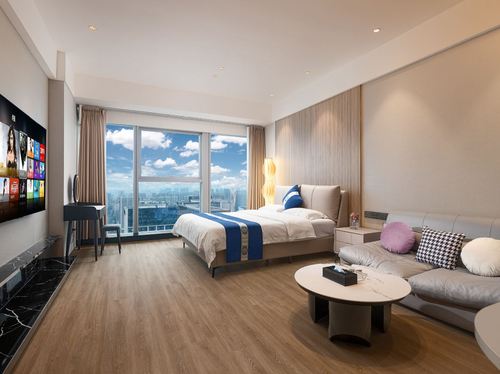
Top10.Grand Cube Qiantu Smart Hotel (Chengdu Global Center Convention and Exhibition Branch)
Building 4, CITIC Pacific Citta, No. 1777, Tianfu Avenue (next to the entrance/exit of Xindao Metro Station)
